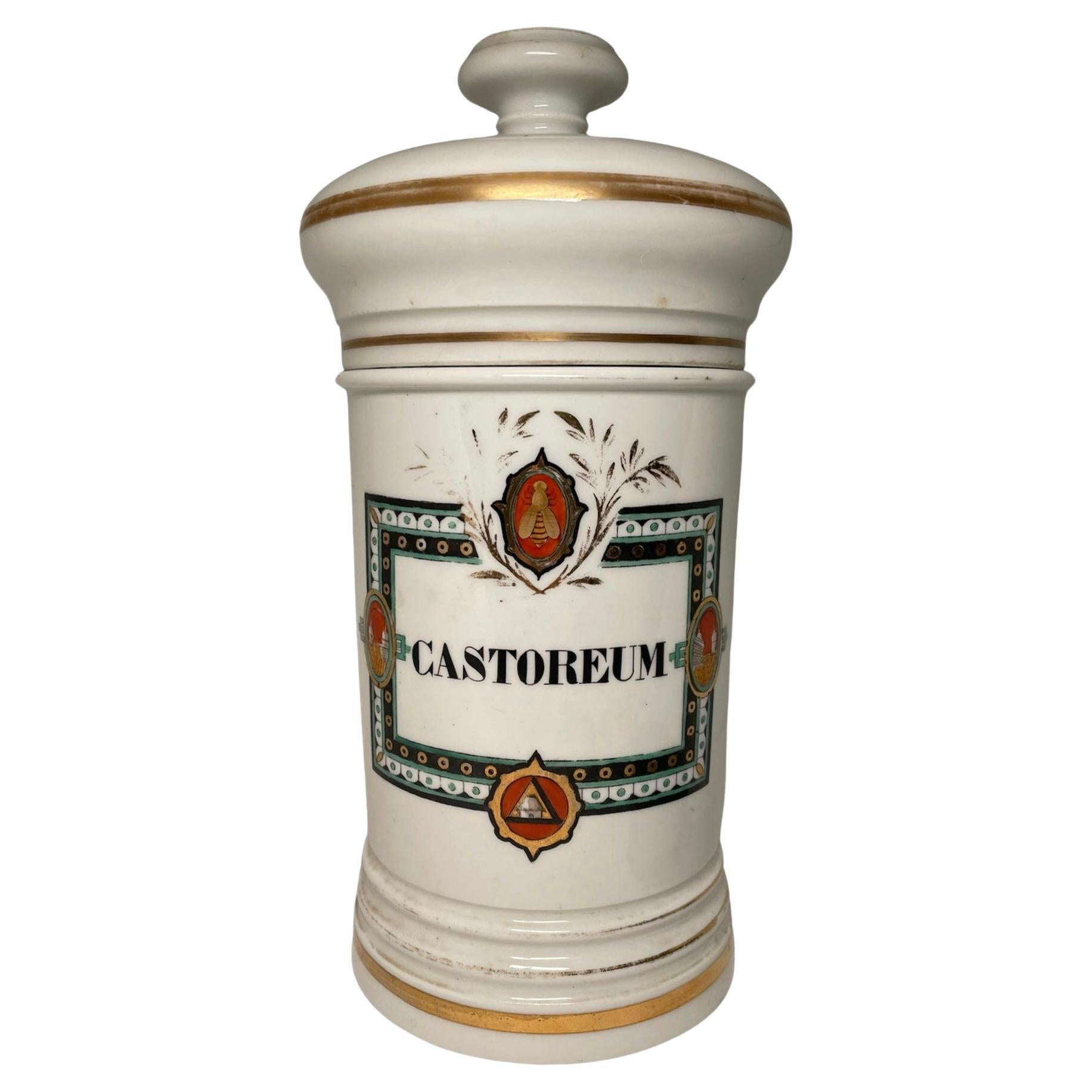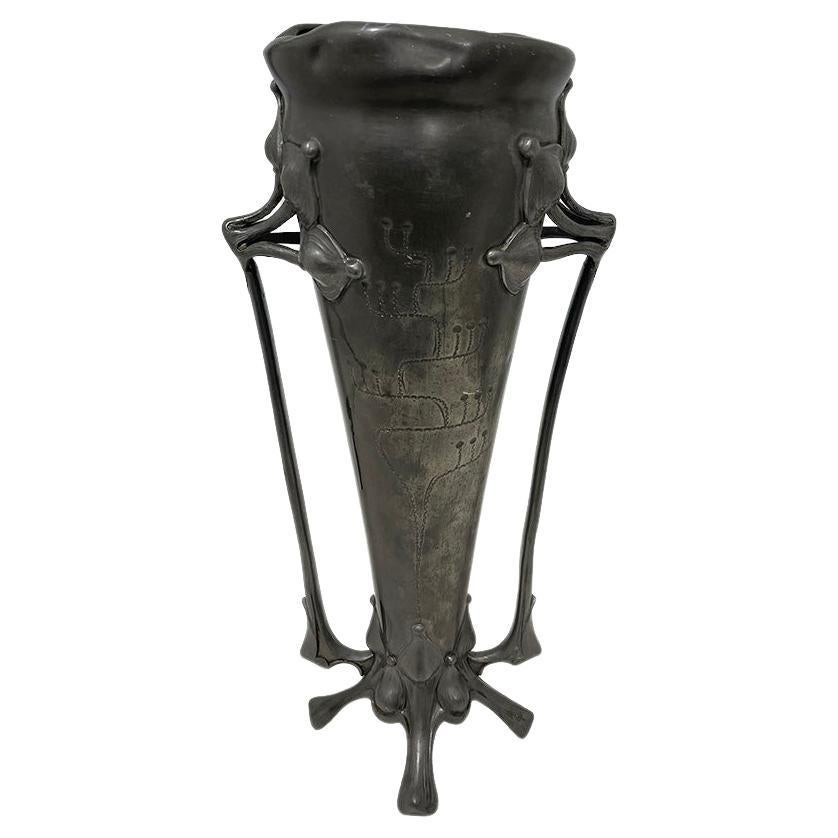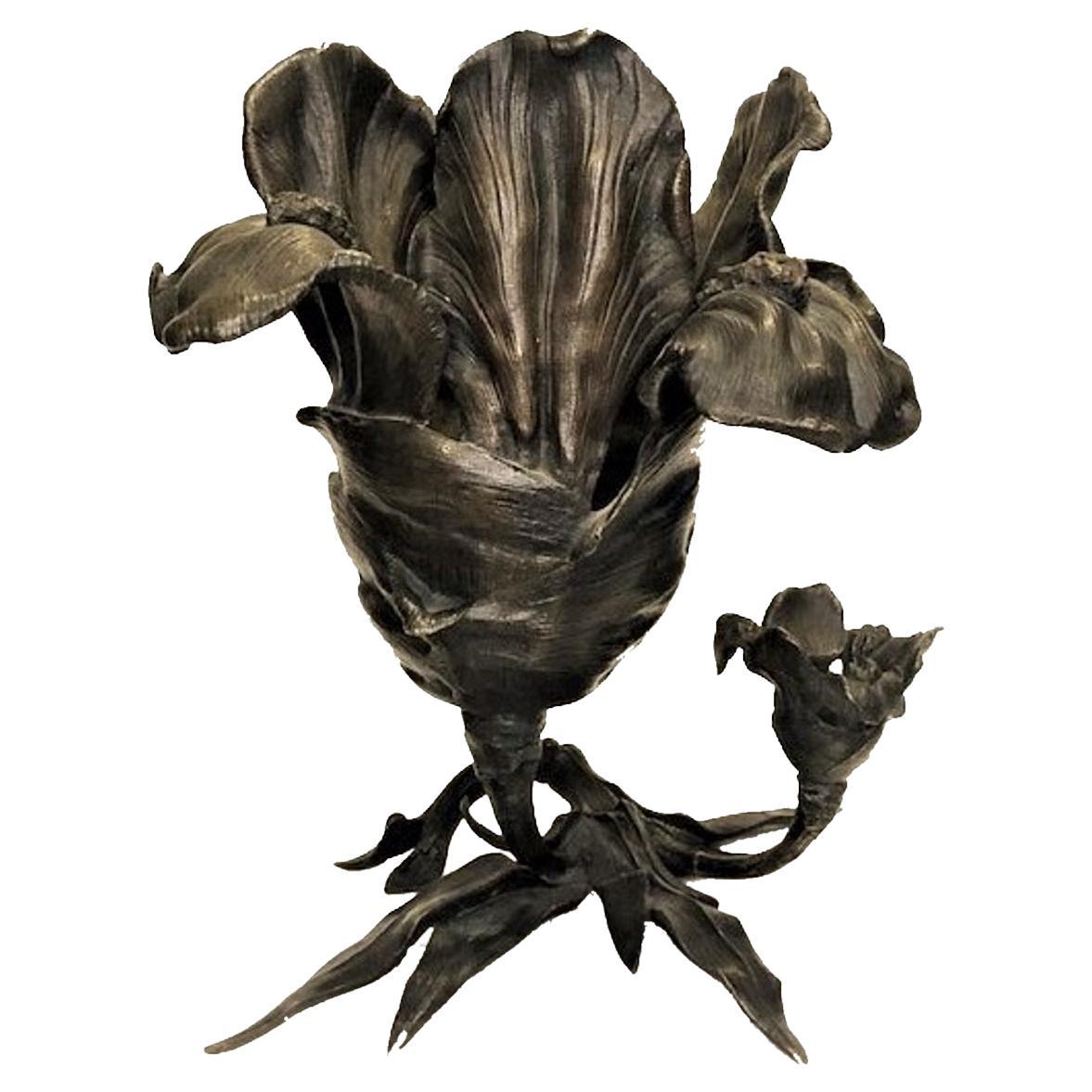Items Similar to Apothecary Counter-Top Gasogene Seltzer Dispenser, French, ca. 1900
Want more images or videos?
Request additional images or videos from the seller
1 of 9
Apothecary Counter-Top Gasogene Seltzer Dispenser, French, ca. 1900
About the Item
This bottle caught our attention just because of how beautiful it looked. The glass bottle is covered in caning, and the white porcelain base adds to the uniqueness.
The purpose of this bottle was to make seltzer (carbonated water). The bottle is marked "Paris".
- Dimensions:Height: 17.5 in (44.45 cm)Diameter: 6.5 in (16.51 cm)
- Style:Other (Of the Period)
- Materials and Techniques:
- Place of Origin:
- Period:
- Date of Manufacture:circa 1890
- Condition:
- Seller Location:Petaluma, CA
- Reference Number:1stDibs: LU879924927292
About the Seller
5.0
Gold Seller
These expertly vetted sellers are highly rated and consistently exceed customer expectations.
Established in 1974
1stDibs seller since 2009
309 sales on 1stDibs
Typical response time: 3 hours
- ShippingRetrieving quote...Ships From: Petaluma, CA
- Return PolicyA return for this item may be initiated within 7 days of delivery.
More From This SellerView All
- Antique Cast Iron Miniature Cabinet, ca. 1900Located in Petaluma, CAThis cast iron cabinet has all the little extras that make it fun. The doors on top open to reveal an original shelf. There is a working drawer, and ...Category
Early 20th Century American Other Models and Miniatures
MaterialsIron
- Nautilus Sea Shell Lamp w/ Whimsical Dolphin Bronze Base, French ca. 1900Located in Petaluma, CAThis exceptionally high quality lamp is candy for the eyes. The base is cast bronze with that dolphin like fantasy fish that appears on lamps, furniture and many other objects. The ...Category
Antique Early 1900s French Art Nouveau Table Lamps
MaterialsBronze
- Art Nouveau French Letter Opener, w/ Beautiful Girl, ca. 1900By Émile PinedoLocated in Petaluma, CAWe believe this to be the best letter opener we have ever offered, especially if art nouveau appeals to you. The quality of the casting is superb right down to the to include her ear...Category
Early 20th Century French Art Nouveau Letter Openers
MaterialsBronze
- Brown Female Warrior w/Shield, on Carved Marble Base, German ca.1900Located in Petaluma, CAThis unusual bronze really caught our attention. The seated female warrior perched high atop a marble base is a rare look in antique bronzes. The bronze...Category
Antique Early 1900s German Other Figurative Sculptures
MaterialsMarble, Bronze
- Orientalist Cold Painted Vienna Bronze Letter Opener, ca. 1900By Bergmann FoundryLocated in Petaluma, CAThis letter opener, most likely done by the Bergmann Foundry is extremely rare. We have sold countless inkwells, bookends, lamps and other accessories for the desk, but the letter o...Category
Early 20th Century Austrian Other Letter Openers
MaterialsBronze
- Antique Cast Iron Bank, Which is a Bank Building, ca. 1900By KentonLocated in Petaluma, CAA very nice original cast iron bank, which is a bank building. Not repainted, or touched up. That is most important to any collector. A neat little e...Category
Early 20th Century American Other Toys
MaterialsIron
You May Also Like
- French Porcelain Apothecary JarLocated in Guaynabo, PRThis is a French Porcelain Apothecary Jar. It depicts a cylindrical lidded jar with white background hand painted in the front with a rectangular plaque with gold borders and the nam...Category
20th Century French Neoclassical Revival Jars
MaterialsPorcelain
- French Art Nouveau pewter vase, ca 1900Located in Delft, NLFrench Art Nouveau pewter vase, ca 1900 A French Art Nouveau vase, made of pewter in beautiful Art Nouveau scene of flowers, raised on 4 legs. A tapered, but rounded model with two ...Category
Early 20th Century French Art Nouveau Vases
MaterialsPewter
- Chinese Floral Apothecary Mortar, circa 1900Located in Chicago, ILThis vintage mortar and pestle from Shanxi, China was cast in iron with a floral relief. It was originally used in a traditional apothecary t...Category
Early 20th Century Chinese Qing Metalwork
MaterialsIron
- Pair of early 20th century French apothecary bottles, ca 1930sLocated in Uppsala, SEPair of early, very decorative, 20th century French apothecary bottles from ca 1930s with green metal tops. Both with the original labels: "Tinctura Cantharidis" and "TALCUM VENTÆ". ...Category
Early 20th Century Industrial Bottles
MaterialsMetal
- Chinese White Apothecary Jar, circa 1900Located in Chicago, ILIn traditional Chinese healing, medicine alone could not cure a person’s illness. A physician would strive to balance a patient's vital energy, their yin and yang, as a person is bel...Category
Early 20th Century Chinese Qing Ceramics
MaterialsCeramic
- French Art Nouveau Patinated Bronze Sculptural Iris Vase, ca. 1900Located in New York, NYABOUT IRIS The iris is a special and mysterious flower. Not only because of its striking appearance, but also from an artistic and historical point of view. It is also like a work of art, as though created by Mother Nature. The unique leaves of this plant not only create wonderful shadow casts, but also look as if they were painted by hand. It's no wonder that iris acts as the muse for countless artists, and can be seen in many famous works of art. The iris was first spotted in the time of Pharaoh Thutmose, in 1504 BC. He had the iris inscribed into the wall reliefs of a temple as a sign of his power, as well as decorating his sceptre with motifs of the flower. Since then, the iris has been a symbol of victory in Egypt. But the symbolism of the iris goes further than that. In Japan, the flower represents courage and is the symbol of the boys' festival. In Islamic cultures, the iris is a symbol of prosperity. In Europe, the flower was a popular weapon symbol in the Middle Ages and stood for chivalry. And in Christianity, the iris was seen as a symbol of the trinity because of its three-part flowers. With more than 300 varieties, the iris is now the most popular flower among growers and gardeners following the rose. Countless artists use the iris in their works and the flower is present in all eras. You can see the flower on furniture, vases, jewelry, fabrics, sculptures, coats of arms and much more. Did you know that the iris is also called the sword lily? It's not a coincidence that it used to symbolize physical and emotional pain and suffering caused by a weapon. We also see the flower in religious art, where it's often associated with Mary and Jesus. The iris is also associated with the Greek goddess Iris, where the flower symbolizes reconciliation and divine messages. This is also reflected in many paintings. Finally, the iris is also visible in Dutch and Flemish still-life paintings. This can be in a religious form, incorporated into an object or as a decorative flower. In the Art Nouveau art movement, the iris (along with other plants, such as the birch) was often used as an expression of feminine beauty. With its almost otherworldly appearance, the iris is perfectly suited to the Art Nouveau aesthetic and is featured in many well-known works of art. The poet of that era, Hermann Hesse...Category
Antique Early 1900s French Art Nouveau Planters, Cachepots and Jardinières
MaterialsBronze
Recently Viewed
View AllMore Ways To Browse
French Lead
Antique Glass Bottles
Brown Glass Bottle
Antique Counters
Water Bottle
White Glass Bottle
Antique Brown Bottle
Antique Bottle Craft
Antique Bottle Crafts
French Counter
Used Glass Counter
Used Glass Counters
Antique Counter Top
Antique Brown Glass Bottles
Brown Glass Bottles Antique
Kitchen Counter Top
Antique Porcelain Bottles
Glass Water Bottle





